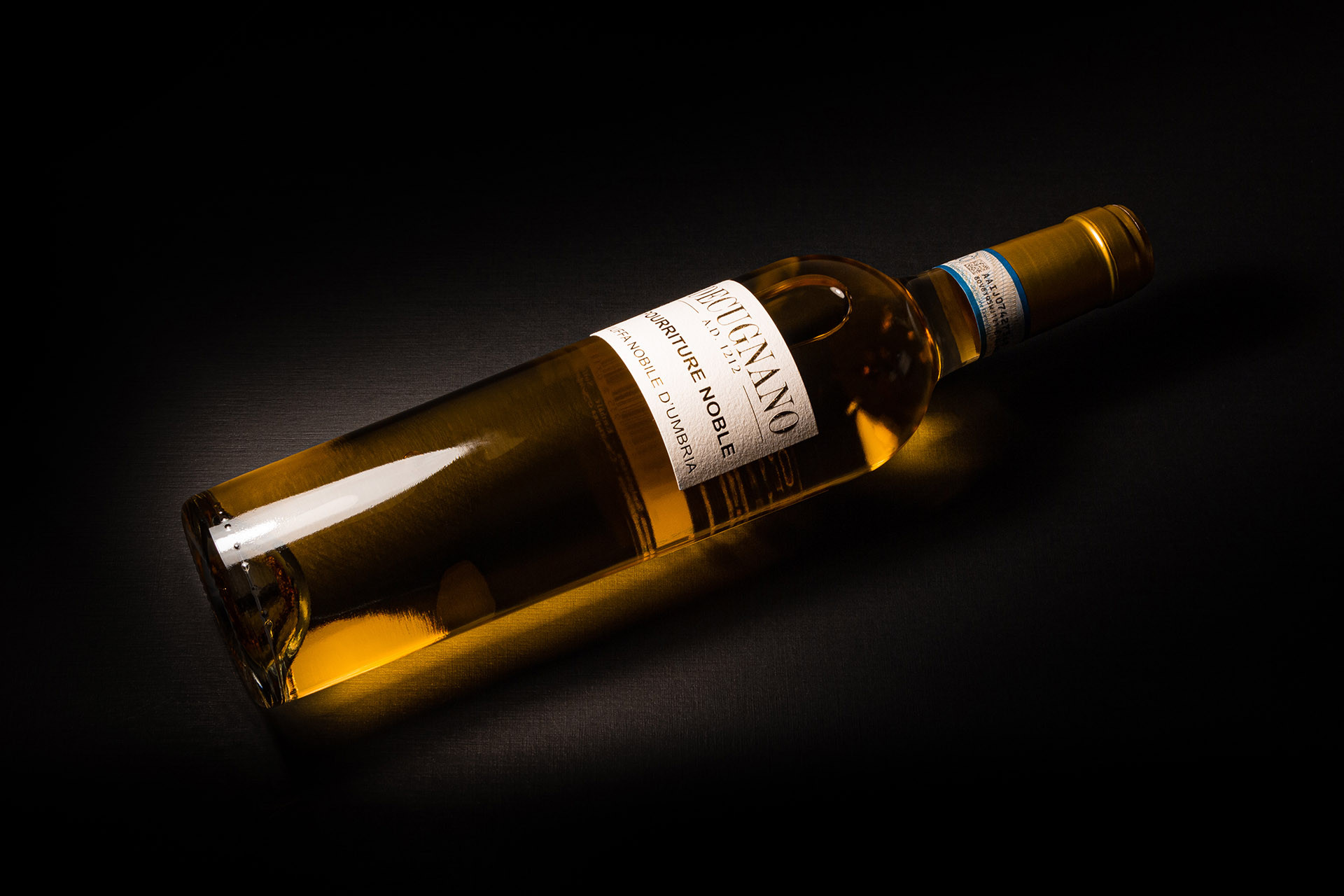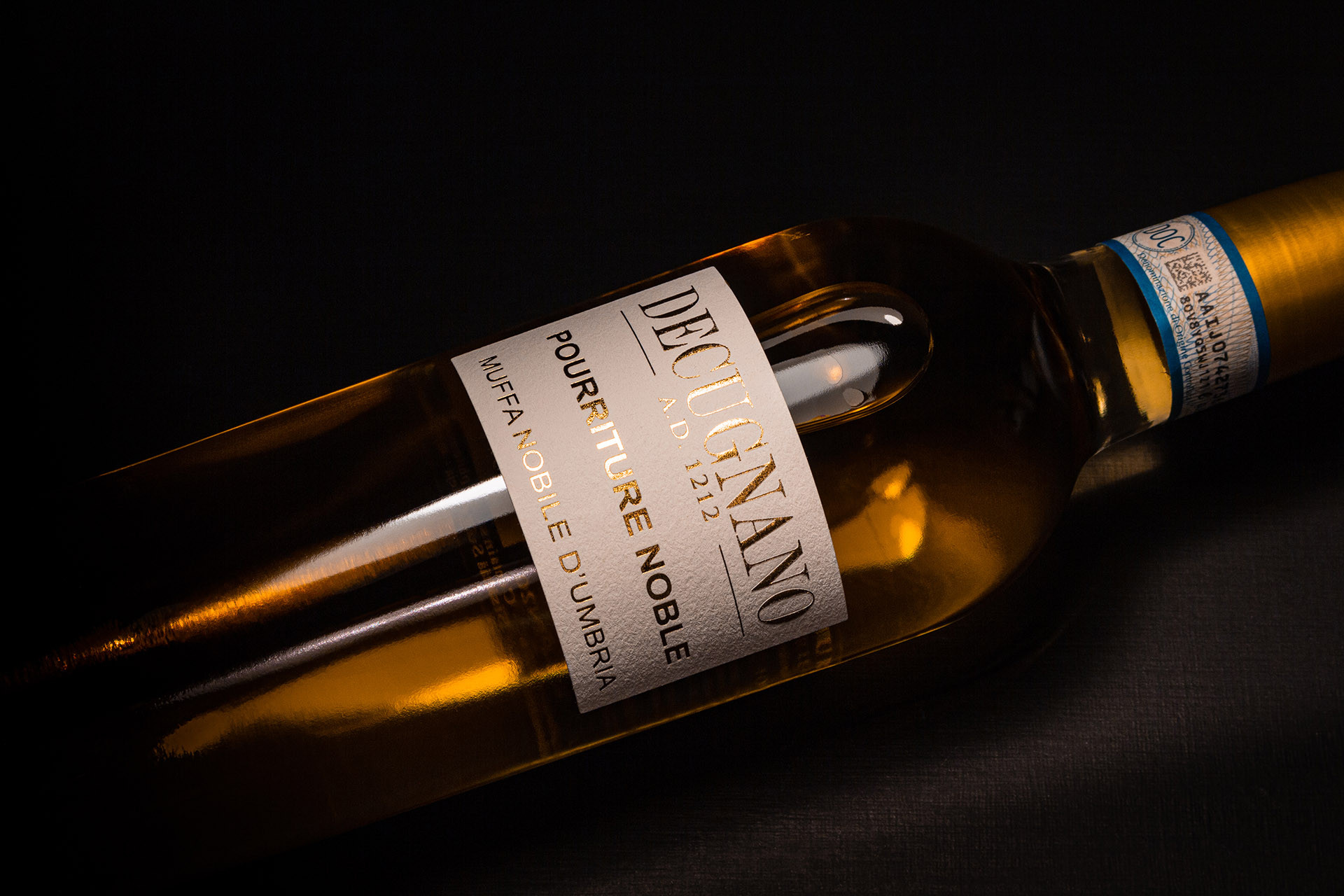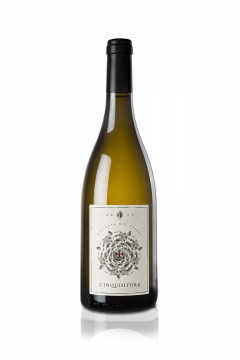
Pourriture Noble
Coming from select vineyards that are fortunate to experience a microclimate conducive to noble rot (pourriture noble in French), meticulous harvesting in multiple passes, immediate pressing, and a lengthy fermentation process result in this rarity: a precious, exquisite, and strictly natural wine.
While elsewhere Botrytis is a disease that harms the vines, at Decugnano and in Orvieto, it becomes the miracle of Noble Rot. The production of this wine is among the most complex, where nothing is taken for granted.
Current Vintage
2020
Appellation
Orvieto Classico Doc Muffa Nobile
Grapes
Grechetto, Sauvignon Blanc and Procanico
Alcohol
14 %
Vinification
Stainless Steel
Awards
Miglior Vino dolce dell’anno (Gambero Rosso), Tre Bicchieri Gambero Rosso, 96 Daniele Cernilli, 5 Grappoli Bibenda, 4 Viti AIS
96 Daniele Cernilli, 5 Grappoli Bibenda, 90 Vinous
Miglior Vino dolce dell’anno (Daniele Cernilli Doctor Wine), 95 Daniele Cernilli, 94 Wine Advocate
96 Daniele Cernilli
The history of Pourriture Noble at Decugnano
In 1981, when Claudio Barbi arrived in Orvieto, he noticed an abundant development of botrytis cinerea, but no one in the area was producing Noble Rot wines.
On the contrary, the fungus was frowned upon, and farmers made sure to harvest the grapes before it developed. Even historical documents, such as the detailed analysis of Orvieto wine commissioned by the Italian Ministry of Agriculture to Giorgio Garavini in 1931, specified that botrytis cinerea did not favor the maturation of Orvieto wine grapes, as it did in Sauternes. However, the creation of the artificial basin of Lake Corbara after World War II completely changed the microclimate of the area.
Claudio decided to try vinifying those grapes affected by botrytis cinerea separately, as he had seen done in Sauternes a few years earlier.
The result? A wine that would surprise many.

Birth of a name
In an era when consumer knowledge of quality wine was limited, Claudio decided to use the French name by which winemakers refer to botrytis cinerea, namely "Pourriture Noble." "Those who know about wine will know what it is," thought Claudio, "while those who have superficial knowledge of oenology, upon seeing a French name, will think the wine is excellent." And so, this wine was born, with an unmistakably French name for a product proudly Italian.

What is Botrytis Cinerea
Botrytis cinerea is the name of a common rot that affects all kinds of fruits. Known also as grey rot, it represents a common headache for producers all over the world. It overwinters in dead wood and spores in spring when humidity and early morning mist creates the perfect environment to thrive in. At this early stage, it will damage grapes splitting the skin and exposing the fragile berries to other enemies.
Conventional and unconventional practices are adopted worldwide to prevent and stop its spreading. In biodynamic agriculture horsetail tea is used to spray the vines, in conventional viticulture anti botrytis spray is a common practise to safeguard the crop. However botrytis can become noble rot when in the latest part of harvest the grape is already formed and contain the equivalent of 7% volume in alcohol. It punctures the berries isolating the tiny hole from other bacteria. Water evaporates (almost 50% will be lost) and berry’s will shrivel. Botrytis metabolizes sugar and acidity, and increases glycerol, acetic acid and gluconic acid. Producers need to monitor their vines when botrytis affects the grapes. More than one harvest might be performed and it is crucial to pick at the right time.
Have you ever seen a noble rot bunch? In all honesty, you might not like to see it. You will never expect that from such poor bunches one of the most extraordinary wines in the world is made. Not all grapes are suitable for botrytis, some of the most popular varieties are Semillon, Sauvignon Blanc, Muscadelle, Pinot Gris, Chenin Blanc, Furmint and Gewurztraminer. France with their Sauternes, Hungary with the Tokaij, Germany with the auslese, beerenauslese e trockenbeerenauslese, Australia with noble rot grapes from Riverina (New South Wales) and of course, Orvieto in Italy are amongst the most extraordinary areas in the world. Muffa Nobile is the name used in Italy, which translates as Noble rot, or Pourriture Noble in French.
Light or amber colour, gold in some vintages the brilliant luminous appearance irradiates its own light. Flavours are often related to dry fruits: apricots, dates, honey and saffron, depending on the varieties nuts and floral notes are also characteristic. The palate expresses pure pleasure: viscose, velvety texture, sweet and rich with fruit intensity, acidity is essential to counterpart the residual sugar and to leave a clean and defined finish. Try some almond-based biscuits or cakes and for a true and unique experience, blue cheeses are amongst our favourite choices.




